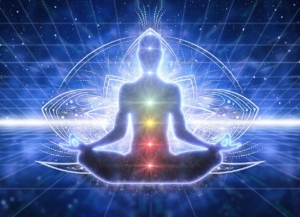The Chakra system is viewed as the energetic map of the body. It is where we can shift our energy to re-energize, balance and bring peace to help eliminate stress and disease.
Ancient Hindu Texts (1,500-500 B.C) showed knowledge of the Chakras written in the Vedas. The Vedas are the largest, oldest written traditions of text in India constructed by the upper Caste Brahmins. The name Chakra derives for the Sanskrit word “Wheel or Turning”. The Chakra system was perceived as a column of energy vortexes that start at the bottom of the spine and move up to the crown of the head. This is what makes up the 7 major Chakras. Each Chakra vibrates and spins at its own frequency and absorbs energy from the environment around them. For this reason it’s vital to have your Chakras balanced as other peoples energy from emotions, baggage or really anything can stick to you and make you feel sluggish and unbalanced causing illness that eventually can become a disease.
The location of each Chakra (energy center) corresponds to an area of the body’s anatomy and each is associated with a different colour. Starting at the bottom of the 7 chakras you have the Root Chakra (Red, Earth), Sacral Chakra (Orange, Water), Solar Plexus (Yellow, Fire), Heart chakra (Green, Air), Throat Chakra (Light Blue, Ether), Third Eye (Indigo) and Crown Chakra (Violet or White).
Each chakra also has its own Sanskrit name. Muladhara, Svadhisthana, Manipura, Anahata, Vishuddha, Ajna, Sahaswara. Chakra is a Sanskrit* name for wheel.
By tapping into someone’s Chakra system many blockages, stresses and health issues can present themselves. With the help of a Chakra Balance, a practitioner can help bring forth these issues and it may help you resolve them. Doing this will help with the vitality of your overall health and reduce stress to the body and mind.
*Google Dictionary: /san,skrit/
An Ancient Indic language of India, in which the Hindu scriptures and classical Indian epic poems are written and form which many northern Indian languages are derived.
Remember to Like us on Facebook and Follow us on Twitter. Feel free to leave a comment below.

